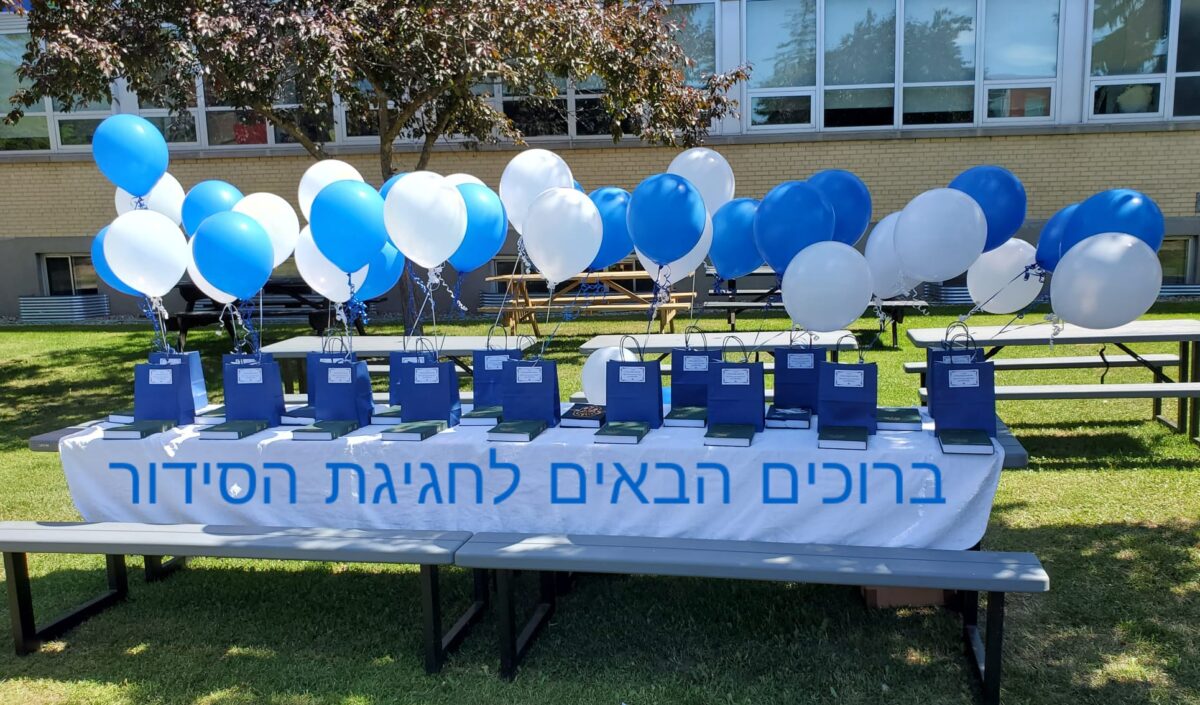The following was shared with our Kitah Alef (Grade One) Families during our school’s annual Chaggigat Ha’Siddur – our celebration of early Jewish learning with the gift of a siddur:
“Before I call each student by name to ‘give’ them their siddur, I want to take just a handful of minutes to share a few words…
The Hebrew word siddur comes from the Hebrew root samech-dalet-reish which means “order”. (You have another common example from the Passover Seder – same root, same idea.) The siddur, in this sense, represents the commonly accepted order of prayers for each service, handed down from generation to generation, with some changes and modifications, but largely intact from the days of the Talmud through today. Thus, one way to view an event like today’s is to celebrate our children taking up their links in the chain of Jewish history. And it is that, for sure, but there’s another idea I’d like to name.
As our students navigate their Jewish journeys at OJCS, they are introduced to a critical concept for understanding Jewish prayer – the idea that prayer exists on a spectrum between kevah, the fixed order of things, and kavannah, the intentionality that one who prays brings to his or her praying. Both are critical to meaningful prayer, but we tend to focus on kevah and forget the kavannah. It is true that without kevah you cannot have community or continuity. The fact that Jews throughout time and across the world say these prayers at these times with these words and this choreography creates a sense of shared experience which builds community and fosters continuity between generations. But that cannot be the whole story. Without kavannah, prayer becomes a rote or robotic exercise lacking in the joy and meaning that makes prayer nourishing and soulful.
Have you ever gone into a Kitah Alef classroom and listened to them pray?
I have, even though it has sadly been a while, and what I can tell you is that you don’t have to worry about joy or ruach or kavannah! You got a taste of that this morning – the younger you are, the more spiritually open, and the more easily one finds it to sing without self-consciousness. It sadly changes for almost all of us as we get older. I view this, however, as a challenge to be met, not a fate to bemoan. I view the giving of our siddurim to Kitah Alef not as a gift, but a brit – a contract. Our job as a school, and I hope your jobs as parents with us as sacred partners, is to ensure that our children don’t simply learn how to say the words, chant the prayers, and when to stand, sit and bow. Our job is to nurture and foster the joy and the meaning. We don’t simply want our students to be technically proficient so they can perform at their Bar or Bat Mitzvahs. We want them to know from experience why a high schooler, university student, young adult and adults in general would choose to pray when it becomes their choice. That’s the holy work ahead of us in the years to come. That’s why this rite of passage marks not an end, but a beginning.
It is why a Chaggigat Ha’Siddur – why a celebration of a siddur gifted by the school, decorated by the parents, and instructed in by the teachers is so appropriate to mark this stage of our journey.
One of our school’s North Stars is that “we are all on inspiring Jewish journeys” and the Chaggigat Ha’Siddur is just the next stop on a journey that began together under the chuppah on the first day of Kindergarten. Another of our school’s North Stars is ruach. My prayer for this class as they go on this journey together is that we manage to hold onto the Ruach in sidduR. That’s how we can ensure that the siddur we give them today won’t be just a trophy to be admired on a shelf, but becomes a tool to be used for discovery and meaning. Let today’s simcha not merely serve as a moment to celebrate, but an inspiration to reach the next stop, and the stop after that, in the extraordinary and unpredictable Jewish journey of this remarkable group of children and families.
Ken y’hi ratzon.
Thank you to Morah Ada for all the love and work that goes into a day like today. Thank you to the Kitah Alef team for their support and participation. Thank you to the parents and grandparents for all the things you do – seen and unseen – to make a Jewish day school journey possible. Let me now welcome Keren Gordon, our Vice Principal, along with the teachers in Kitah Alef, as we prepare to celebrate each of our students…”

